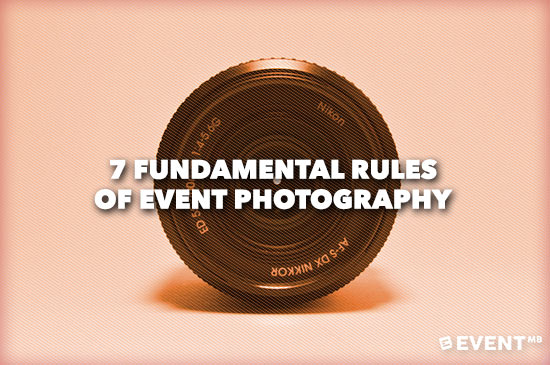Skift Take
For small budget events, photography can sometimes fall onto the back burner. However, it is possible to capture great images that highlight your event without spending hundreds of dollars on a professional photographer. This being said, you will need to know a few tricks of the trade in order to make it happen. Follow these rules to give yourself a shot at event photography success.
1. Develop a Shot List
If you have a staff member or volunteer taking photos at the event create a list of images you want them to capture. Be as detailed as possible and include anything you might want for future publications or promotion. This will help your photographer to stay on track and gather all of the images you need.
Photos of signage, décor, full room views or candid photos often fall by the wayside for amateur photographers. By adding these items to a shot list they are sure to be captured by whoever has take on the role of photographer for your event.
2. Check Your Lighting
Lighting is huge when it comes to producing high quality images. If your venue is dimly lit you may struggle to gather great images without using external lighting elements. If it is a very bright day and your event is taking place outside you can obtain lens filters or study the direction of the sun to avoid unsightly shadows.
Some lighting issues can be corrected when you are processing the photos, but ideally you want a well-lit image to being with. Do some research on the front end and be prepared for what you might encounter.
3. Highlight Key Players
In addition to a shot list, you should be sure to point out the VIP players at your event and make sure the person taking photos knows when to capture images of these important people.
Are there awards being handed out or groups of VIPs that should be photographed mingling during cocktail hour? Information like this should be passed along to ensure you get the pictures you need. Important guests may ask for photos following the event and you would never want to respond with “we unfortunately didn’t capture an image of you at the event”.
4. Embrace Both Candid and Staged Shots
No matter how you plan to utilize the photos initially, it is always great to have both candid and staged or formal photos. Even if you are planning to frame the formal photos, you may use the candid shots for future marketing publications or social media messaging. Having a large number of images shot in a variety of styles will always be better than not having enough of an assortment.
5. Convey the Event Theme
Photos will remain long after the event is gone. You want the images them to capture the essence of the event in every way. Whoever is taking your photos should know the feeling that you want your event to evoke. Take photos of the table scape, the venue and the overall décor. Perhaps guests have themed attire or seasonal food is being served. Whatever theme you provide at the event should also be communicated in your photos.
6. Communicate The Plan for Your Photos
If you are planning to take photos at your event, you have some idea in mind on how you plan to utilize the images. Make sure your photographer has the inside scoop on your agenda, as this should impact the photos that they try to capture.
Perhaps you plan to use the images in promotional materials for next year’s event. If so, you want your photos to capture many different attendees and activities in order for the marketing efforts to show diversity. The format has a huge impact on the photos you will target, however as we mentioned before, having a variety is always a great thing!
7. Hire a Professional
At the end of the day the best way to get high quality images of your event is to spend the money and hire an experienced professional. Photographers have the equipment and training that will best highlight your fantastic event.
After an event is completed, the best way to share the experience is through photos and video. The money you spend on these services will pay off tenfold in the long run.
If you have extra money in the budget, don’t burn yourself out by trying to be a photographer and the event planner. Research the photographers in your area and choose a top-notch vendor to really capture the event.
In Conclusion
Perhaps you enjoy photography and want to give it a try at your next event! The tips above will help you to excel and hopefully walk away with better images.
Keep in mind that as the planner your focus must be on the event and your client or company, so the time you have to dedicate to photos often goes by the wayside. Having a dedicated staff member or volunteer to take the photos can help with this, but at the end of the day hiring a professional will ensure you get what you need to properly highlight the quality of your event.





